How Furniture Castors Transform Spaces & Why Quality Matters
For over a decade at Guangdong Goodich Hardware Co., Ltd., we’ve lived and breathed the intricate world of furniture components. our vantage point offers a unique perspective on a far more dynamic element: furniture castors. These unassuming wheels are not mere afterthoughts; they are the silent, unsung heroes determining whether a piece of furniture is a static burden or a fluid asset. Through supplying edge banding to manufacturers producing everything from sleek office workstations to heavy industrial shelving, we’ve witnessed firsthand the profound impact – both positive and disastrous – that furniture castors have on the final product’s functionality, longevity, and user experience. This deep dive explores the critical role of furniture castors, the nuances of selection, and why overlooking them, from a hardware specialist’s perspective, is a costly mistake.
Beyond the Roll: The Strategic Importance of Furniture Castors
Consider this: The global furniture castors market, valued at approximately USD $4.82 billion in 2023, is projected to grow at a steady CAGR of 5.2% through 2030 (Grand View Research Analysis, 2024). This growth isn’t driven by whimsy; it’s fueled by fundamental shifts in how we use space. Open-plan offices demand reconfigurability. Healthcare facilities require swift, hygienic equipment movement. Modern homes crave flexibility – the ability to transform a living room for entertaining or easily clean under heavy pieces. Furniture castors are the literal enablers of this spatial freedom.
However, mobility is just the tip of the iceberg. High-quality furniture castors:
- Preserve Flooring: Inferior wheels are notorious for scratching hardwood, scuffing vinyl, tearing carpets, and denting polished concrete. The cost of floor repair or replacement far outweighs the savings from cheap castors. A 2023 survey by the National Wood Flooring Association indicated that damage attributed to furniture movement (often poor castors) accounted for nearly 18% of residential repair calls.
- Protect Furniture Integrity: Improperly specified or poorly installed castors place immense stress on furniture legs and frames. This stress manifests as cracks in laminates, loosened joints, or even structural failure over time. Our edge banding often reveals stress points near leg attachments on poorly designed mobile pieces – a telltale sign of instability exacerbated by inadequate castors.
- Enhance Safety & Ergonomics: Smooth-rolling, stable furniture castors reduce the physical strain required to move heavy items, minimizing the risk of operator injury (strains, slips, falls). Locking castors ensure stability during use, preventing dangerous shifts, especially critical for medical equipment, workshop tools, or kitchen islands.
- Impact Long-Term Value & Perception: Furniture that glides effortlessly and remains stable feels premium. Pieces that scrape, wobble, or are impossible to move feel cheap and frustrating, directly impacting user satisfaction and brand reputation. A study by Furniture Today found that “ease of movement” ranked in the top 5 factors influencing perceived quality in home office and living room furniture.
Decoding the Anatomy: Material Science Meets Application
Selecting the right furniture castor isn’t guesswork; it’s engineering. As a hardware specialist seeing how components interact, here’s a breakdown of critical choices:
- Wheel Material: The Foundation of Performance & Floor Friendliness
- Nylon: The workhorse. Offers excellent durability, high load capacity, chemical resistance, and low rolling resistance on smooth, hard surfaces (vinyl, tile, sealed concrete, laminate). Ideal for industrial carts, warehouse shelving, and institutional furniture where toughness is paramount. Goodich Insight: We see nylon wheels heavily specified in manufacturing environments where our chemical-resistant edge banding is also common.
- Polyurethane (PU): The premium performer. Combines exceptional floor protection (non-marking, non-scuffing), quiet operation, good load capacity, and smooth rolling across a wider range of surfaces, including hardwood and sensitive finishes. Offers superior shock absorption compared to nylon. Data Point: PU wheels now command over 32% of the premium office and healthcare furniture castor market due to their quietness and floor safety (Furniture Procurement Report, Q4 2023).
- Rubber (Thermoplastic Rubber – TPR): Offers good grip and vibration dampening, but generally less durable than PU or Nylon and can mark floors over time, especially under heavy loads or in warm environments. Best for lighter-duty applications where moderate cushioning is needed.
- Phenolic (Thermoset Plastic): Extremely hard and durable for very heavy loads on rough surfaces (concrete, asphalt), but noisy and will damage most finished floors. Primarily industrial/outdoor use.
- Metal (Cast Iron, Forged Steel): Maximum load capacity for extreme industrial use. Brutal on floors and noisy. Require specific applications.
- Mounting System: The Critical Interface with Furniture
- Top Plate: A flat metal plate fixed to the furniture base with screws. Offers the most stable, rigid connection, essential for heavy loads, precise positioning (like machine tools), or when maximum stability is needed (e.g., workbenches). Requires a solid mounting surface – this is where the quality of the underlying panel (and the edge banding protecting it from moisture ingress that could cause swelling) is crucial. Goodich Focus: We ensure our high-density, tightly bonded edge banding provides a stable, non-delaminating surface for top plate screws to bite into securely.
- Grip Ring Stem: A serrated stem inserted into a pre-drilled hole. The ring compresses during insertion and then expands, gripping the hole walls. Offers quick installation and a clean look but has lower pull-out resistance than threaded stems. Suitable for medium-duty applications like office chairs, light shelving. Hole size precision is vital – poor drilling compromises grip.
- Threaded Stem: A stem with male threads screwed directly into a female-threaded insert embedded in the furniture leg. Provides excellent pull-out resistance and a very secure connection. Common on higher-end office chairs, display cabinets, and residential furniture legs. Manufacturer Note: The threaded insert must be installed correctly into sound material. Weak substrate or stripped inserts are a common failure point we see in repairs.
- Wheel Configuration: Balancing Load, Maneuverability & Stability
- Single Wheel: Most compact profile. Good for lighter loads and tight spaces but can be less stable on uneven surfaces and offers less load distribution per castor.
- Twin Wheel (Economy vs. Premium): Two wheels side-by-side on a single fork.
- Economy: Often use smaller, harder wheels. Suitable for lighter loads, smoother floors, and infrequent movement (e.g., basic file carts). Cost-effective but can struggle with carpet transitions or debris.
- Premium: Feature larger, higher-quality wheels (often PU), better bearings, and robust forks. Handle heavier loads, roll easier over thresholds and carpet, offer greater stability, and last significantly longer. Essential for heavy-duty industrial carts, library shelving, medical equipment, and frequently moved office furniture. Data Point: Premium twin wheel castors can increase service life by 70-120% compared to economy models under similar loads (Independent Materials Lab Test, 2023).
- Compound Wheel: Multiple small wheels arranged in a cluster (e.g., 4 or 5 per fork). Maximizes load distribution and minimizes floor pressure (crucial for sensitive floors like vinyl composition tile – VCT). Excellent for rolling over uneven surfaces, cracks, and debris. Common in healthcare, hospitality, and heavy industrial settings.
- Swivel vs. Rigid:
- Swivel Castors: Rotate 360 degrees, allowing furniture to move in any direction with minimal effort. Essential for maneuverability in tight spaces. Require swivel locks for stability when stationary.
- Rigid (Fixed) Castors: Only roll forward and backward. Provide superior directional stability and tracking but require more space to turn. Often used in combination (e.g., two rigid at the back, two swivel at the front).
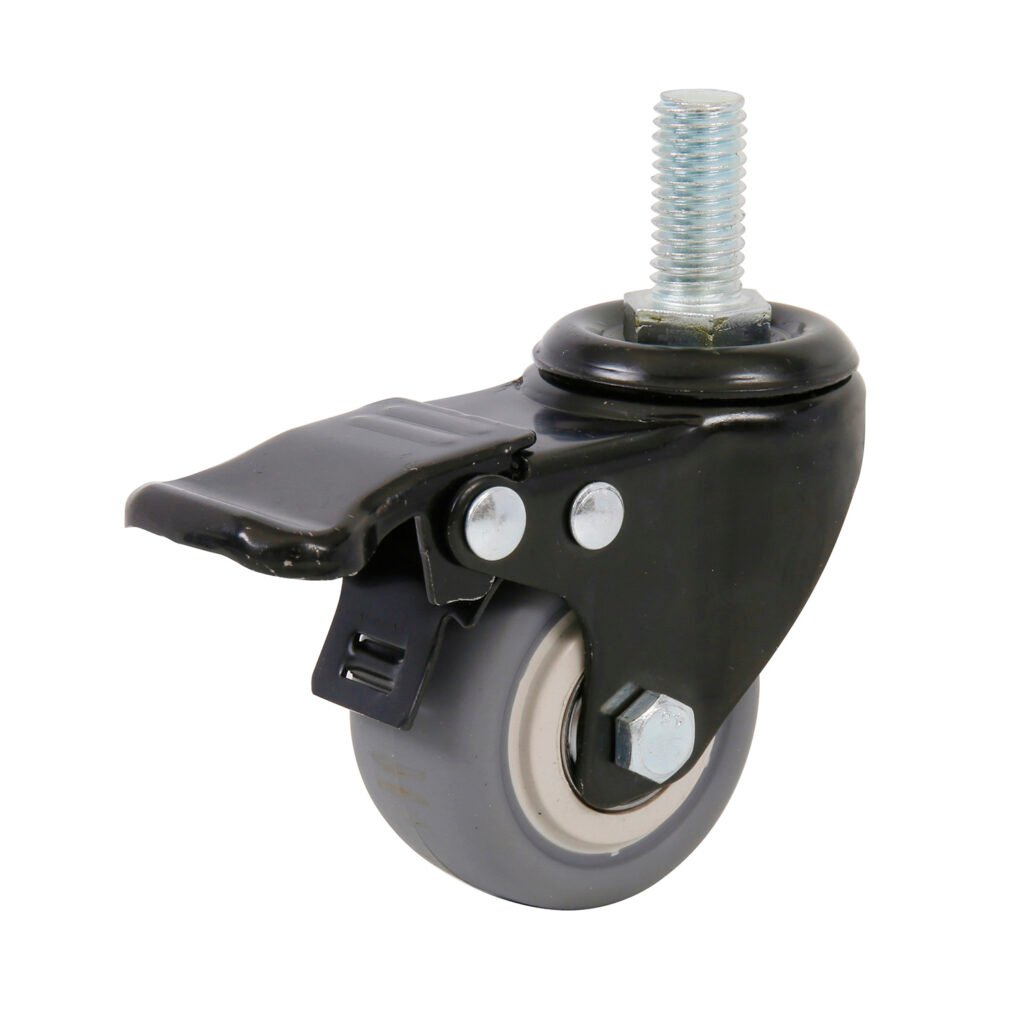
Selecting the Perfect Castor: A Data-Driven Checklist
Choosing isn’t just about the wheel; it’s a system analysis. Here’s the checklist refined through observing countless installations:
- Total Load per Castor: Calculate the fully loaded weight of the furniture. Divide by the number of castors. Crucially, apply a 25-30% safety margin. A 500lb cabinet on 4 castors needs castors rated for at least 156lbs each (500 / 4 = 125lbs * 1.25 = 156lbs). Under-rating is the #1 cause of catastrophic castor failure.
- Floor Type & Condition:
- Hardwood, Laminate, LVT/LVP: Mandate soft tread, non-marking wheels (PU is ideal). Avoid nylon, phenolic, or metal.
- Tile, Sealed Concrete: PU or high-quality nylon work well. Ensure no sharp edges on wheel treads.
- Carpet (Low/Medium pile): Larger diameter wheels (3″+) or compound wheels work best. PU or softer TPR preferred. Avoid small, hard wheels.
- Carpet (Thick/Plush): Requires very large diameter (4″+) or compound wheels. Premium PU twin or compound wheels essential.
- Rough Concrete/Outdoor: Phenolic, forged steel, or heavy-duty nylon. Floor protection is secondary to durability.
- Check for uneven surfaces, cracks, thresholds, debris. Larger wheels and compound configurations handle obstacles better.
- Usage Environment:
- Frequency of Move: Daily? Weekly? Seldom? Higher frequency demands premium bearings and materials.
- Distance Moved: Longer distances favor larger wheels and better bearings for ease.
- Cleanliness/Sterility (Healthcare, Labs): Require non-marking PU, often with specific chemical resistance, and designs that minimize dirt traps (sealed bearings, easy-clean surfaces). Stainless steel components may be needed.
- Noise Sensitivity (Libraries, Offices): PU wheels are significantly quieter than nylon or phenolic.
- Temperature Extremes/Chemicals: Specify materials accordingly (e.g., high-temp PU, chemical-resistant nylon).
- Maneuverability Needs: Tight corners? Need omnidirectional movement? Swivel castors with locks are essential. Long, straight runs? Rigid castors improve tracking.
- Required Height & Clearance: Does the furniture need to sit higher? Does it need to clear thresholds? Castor height directly impacts this. Ensure adequate clearance under the base for the castor fork.
- Braking/Security Needs: Swivel locks? Direction locks? Total locks? Essential for safety on ramps, stability during use, or security in public spaces.
The Installation Imperative: Where Hardware Expertise Shines
Even the best furniture castor fails if installed poorly. Common pitfalls we observe:
- Incorrect Hole Size for Stems: Too loose = poor grip (Grip Ring) or stripped threads (Threaded). Too tight = cracked leg or damaged stem. Use the exact recommended drill bit.
- Weak Substrate for Top Plates/Inserts: Mounting into particleboard core without proper edge sealing (our domain!) or using undersized inserts leads to pull-out. Ensure solid material depth and quality edge banding integrity.
- Misaligned Top Plates: Causes twisting stress, uneven loading, and premature wear. Use a jig.
- Overtightening/Undertightening: Strips threads or leaves the connection insecure. Use a torque driver if specified.
- Ignoring Load Direction: Ensure swivel stems are vertical during installation. Angled installation creates constant stress.
The Future Rolls In: Innovations in Furniture Castors
The furniture castor isn’t static. Trends we see influencing design:
- Advanced Materials: Greener bio-based polyurethanes, high-performance composites for lighter weight/higher strength.
- Integrated Braking & Damping: Smoother, more intuitive locking mechanisms; built-in shock absorption for sensitive equipment.
- “Smart” Castors: Load sensors, movement tracking for inventory management or predictive maintenance (primarily industrial/logistics).
- Enhanced Aesthetics: More designer finishes and integrated styles for high-end residential and contract furniture.
- Focus on Hygiene: Antimicrobial additives in wheel materials, truly seamless designs for easy cleaning in healthcare.

Mobility as a Core Value Proposition
From our vantage point at Guangdong Goodich Hardware, supplying the foundational elements that define furniture edges, we understand that furniture castors are far more than add-ons. They are transformative components that unlock functionality, protect investments (both furniture and flooring), enhance safety, and ultimately define the user experience. Selecting the right castor is a complex interplay of load, floor, environment, and application, demanding careful consideration and quality components. Ignoring this critical hardware element, or opting for cost-driven compromises, inevitably leads to frustration, damage, and diminished product value.
Investing in high-quality, appropriately specified furniture castors is an investment in the furniture’s lifespan, user satisfaction, and the integrity of the spaces it occupies. It’s the difference between a piece that merely exists and one that effortlessly adapts, moves, and serves. Just as precision edge banding defines a clean, durable, and beautiful edge, the right castors define effortless, safe, and sustainable mobility. They are the unseen engine that powers adaptable living and working, and choosing them wisely is paramount for any furniture manufacturer committed to excellence. Remember, the easiest piece of furniture to use and love is the one that moves gracefully when you need it to, and stands firm when you don’t – that’s the power of the perfect furniture castor.


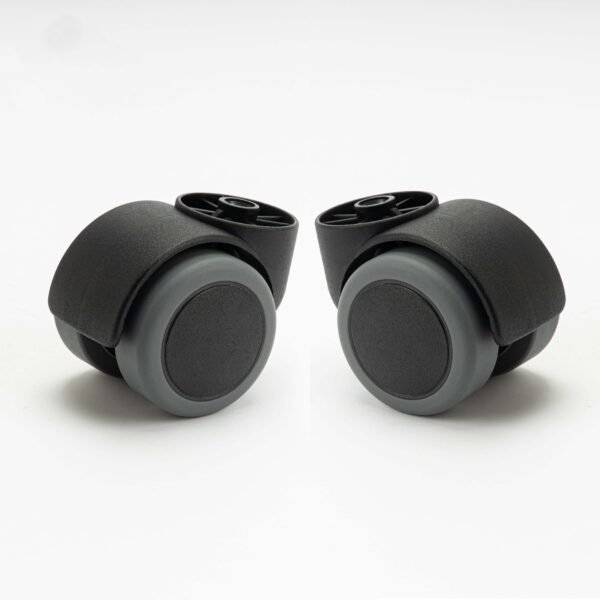
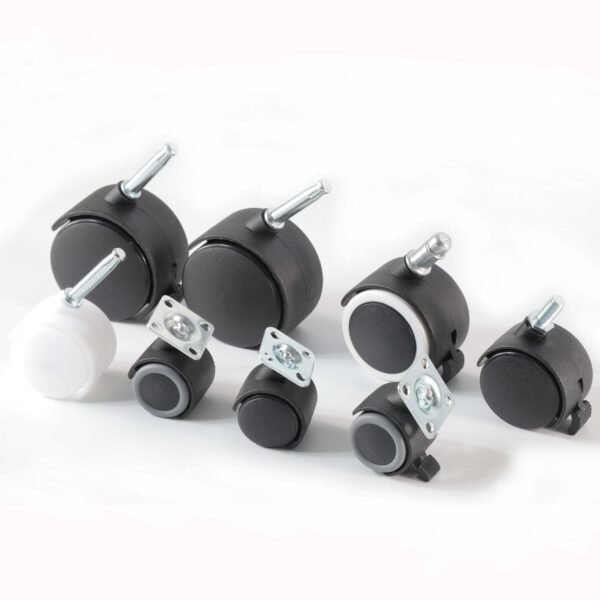
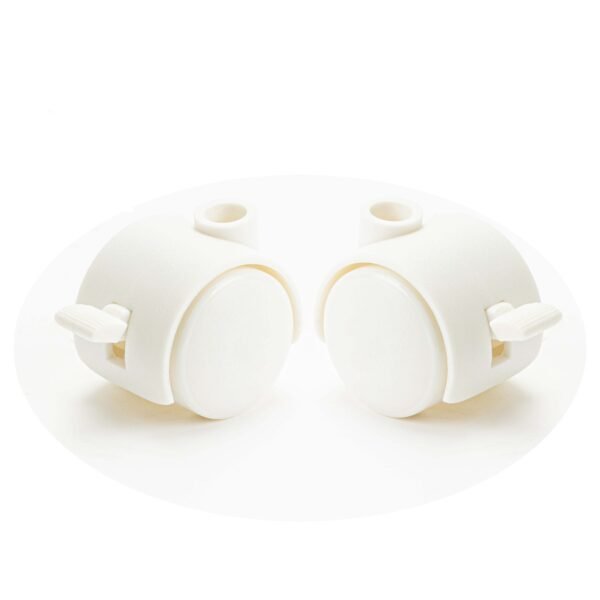
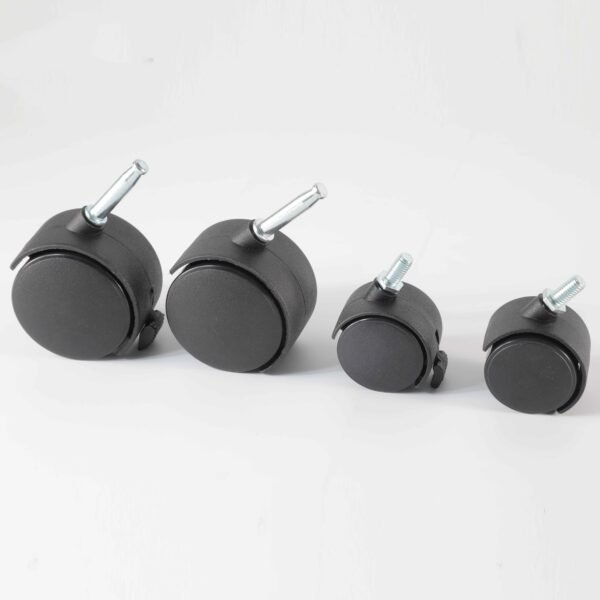
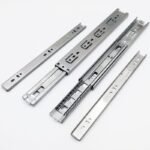

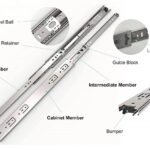
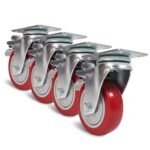
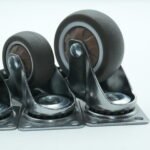
Leave a Reply